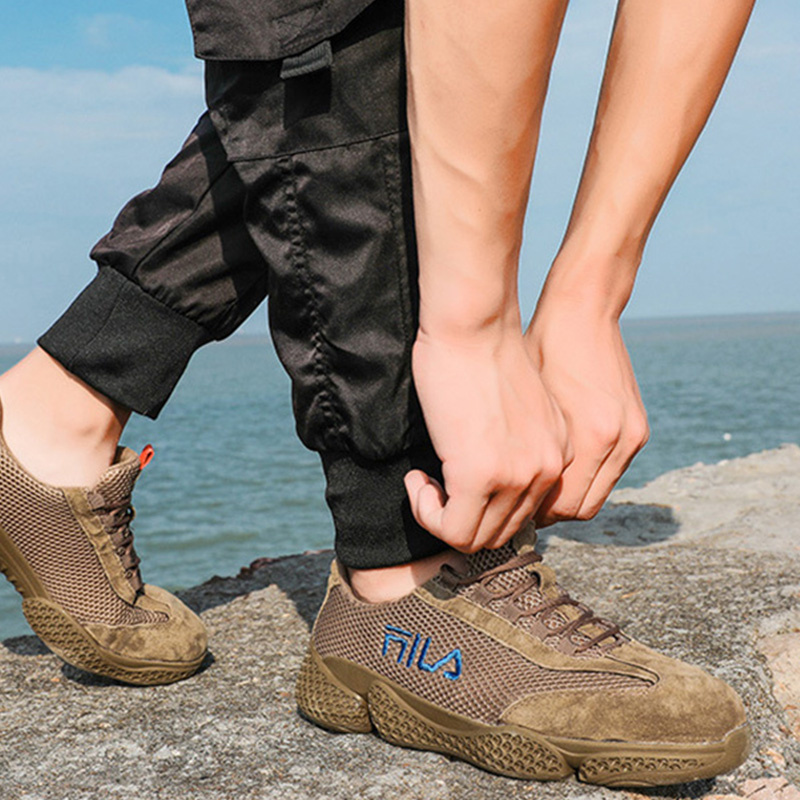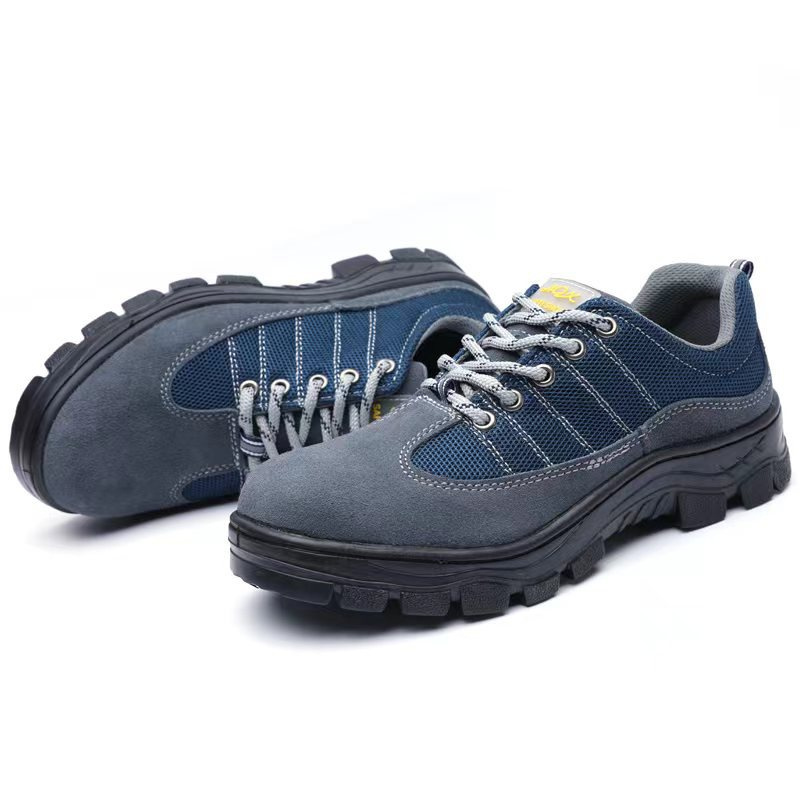
Wearing new safety work shoes can be a daunting experience, especially if you have to wear them for long hours. One common problem that arises with new safety shoes is blisters, which can cause discomfort, and pain, and even affect your productivity.
However, with the right techniques and precautions, you can prevent blisters from forming and enjoy a comfortable workday. In this blog, we will share some tips and advice on how to break in new safety shoes and prevent blisters from developing.
What Causes Blisters in New Safety Work Shoes?
The contact that occurs between a fresh pair of safety work shoes and the skin frequently leads to the development of blisters.
When a shoe continuously scrapes against the skin, it can cause the layers of skin to split and fill with fluid, resulting in a painful blister. This can be caused by friction between the shoe and the skin.
Blisters are especially common in newly purchased safety work shoes since the shoes may not have had enough time to be broken in and may not fit the wearer properly.
In addition to these elements, heat, moisture, and the kind of socks that are worn can all play a role in the formation of blisters in new safety work shoes.
Blisters can also be caused by improper foot care, such as not keeping feet clean and dry. This can significantly increase the likelihood of getting blisters.
What If You are Suffering from Blisters in New Safety Work Shoes?

Because of the discomfort and agony that blisters can cause, it can be difficult to focus on job activities and accomplish them quickly. This can lead to a drop in productivity as well as a possible decline in the quality of the work.
Having Blisters on your feet can have a negative influence on your balance and stability, which can increase the chance of slipping, tripping, and falling at work. This is in addition to the negative impact blisters can have on your productivity.
Wearing safety working shoes with blisters may also lead to very severe dangers to your health, especially if you work with dangerous chemicals or operate heavy machinery, which increases the likelihood that you will experience it.
Annoyed Blisters can have a psychological impact on workers in addition to their obvious physical consequences, which will result in demoralization and depletion. This, in turn, can lead to decreased morale and decreased work satisfaction.
This might, what’s worse, contribute to burnout and make it harder to keep a cheerful attitude while working.
How to Keep Blisters Away from Your Work?

Yeah, give some thought to the annoying sensations you experience on blisters when you suffer from them as a result of your brand-new work shoes, which you are required to wear each and every time you walk out to go to your place of employment.
At this point, it is necessary for you to take action in order to eliminate them.
Choose the Fitted Safety Shoes
In fact, this is one of the most important things to consider because, in fact, improper-fitting shoes are one of the most common reasons why you develop blisters on your feet. Blisters are commonly caused by shoes that are either too tight or too loose.
Therefore, when choosing shoes to wear, make sure you choose ones that will give you a snug fit, which ensures that your toes and heels will stay snugly inside the shoes and won't be overly cramped or too loose.
This is important because you want shoes that will provide the best support and comfort for your feet. If the shoes are too loose, your feet will be able to move around too much and you may end up with blisters or soreness.
If the work safety shoes are too tight, they may cut off circulation to your toes or put too much pressure on your heels.
Use Band-Aids

Usually, you will get blisters on a certain part of your feet, and you should be the one that knows it better than anyone else can. You have to stick band-aids on the vulnerable part of your feet the next time you wear new safety shoes.
The band-aids will help prevent getting blisters when the part of the shoes rubs on your skin. Make sure to change the band-aids often. If possible, you should also try to wear two pairs of socks to provide an extra layer of cushion.
Apply Blister Defense Gel
If you are looking for a way to prevent blisters, this is the best solution that will provide you with excellent results. This product is a medicated blister preventative that works by keeping the blister-prone spots dry as well as making sure your feet are pain-free from blisters.
The only thing you have to do is apply them before wearing the shoes in the areas where you are most prone to getting blisters.
It is easy to apply and it is also long-lasting, so you don’t have to worry about reapplying it throughout the day. Additionally, it is lightweight and non-greasy, so it won’t affect your mobility.
Wear Thick Socks
A great way to ensure you do not develop blisters on your feet during the break-in period would be to wear thick socks.
Choosing thick socks is one of the best things that can be done for your feet, as they are all going to offer the same kind of benefits as when you wear new shoes for the first time at work.
Thick socks provide a cushion between your feet and the shoes, thereby reducing friction. This reduces the chances of developing blisters, as the socks absorb the impact of your feet against the shoes, and the socks are more likely to wear out before your feet do.
It is believed that it would be tough to get used to those socks, but when you feel a bit more comfortable with your shoes, you will know that you will not have to deal with them for too long.
Wear Liner Socks

It is important to wear liner socks when you are putting on new safety shoes so that the skin does not get exposed.
There is something good about it, as it acts as a barrier between your skin and new work safety shoes, thereby preventing any direct contact between them, which results in blisters forming on your feet.
They also help to reduce the chances of developing an infection due to bacteria and fungi in the safety shoes for work. In addition, liner socks help to absorb moisture, which keeps your feet cool and dry.
Therefore, by wearing liner socks, you won't have to worry about your skin being damaged because there will be no irritation to your skin.
Wear Moisture-Wicking Socks
If you wear socks that are moisture-wicking, you will be able to control sweat and, therefore, prevent blisters from forming.
Moisture-wicking socks will help to control sweat and thus prevent blisters because they allow your feet to breathe and soak up the sweat of your feet as well.
The fabric of these socks is made up of polyester and other synthetic fibers that are designed to draw moisture away from your skin and move it to the outer surface of the fabric, where it can evaporate quickly.
This helps to regulate your body temperature and prevents sweat from building up on your feet, which can lead to blisters.
Treat the Blistered Sport ASAP

You should remove your shoes ASAP when the moment you notice that a certain area of the bottom of your feet is getting hot as a result of constant friction. You should apply some cooling gel to these hot spots to relieve the discomfort.
The heat and friction caused by the shoes can create pressure points that can eventually lead to blisters. The cooling gel helps to reduce the temperature of the skin and reduce friction, which in turn helps to keep blisters from occurring in lightweight safety shoes.
By doing this, blisters are definitely going to be prevented from forming. In other words, it's better to nip the vice in the bud rather than let it fester.
Stretch out New Safety Shoes
There are a few reasons why shoes can cause blisters on your feet, including the fact that they fit too tightly to your feet without giving them any room to adjust. If you are in this situation, you would benefit from a boot stretcher!
Additionally, if your shoes are made from materials such as leather or canvas, it can create friction and heat when your feet move around inside the shoes, leading to blisters.
A shoe stretcher helps to reduce this friction, allowing your feet to move around without causing any discomfort. When you wear it, you will find that it tends to get a bit bigger so your feet can get enough space inside to feel comfortable.
It is not a difficult task to stretch out your new safety shoes if you know the exact processes to follow. Check out this article on 6 WAYS TO STRETCH COMPOSITE TOE SAFETY SHOES which explains these steps in further detail.
Final Say

Preventing blisters in new safety shoes requires some preparation and attention to detail. By choosing the right size, stretching out your shoes gradually, and using protective products such as pads or gels, you can reduce the likelihood of blisters forming.
Additionally, wearing socks every day and checking your shoes regularly for signs of wear and tear can help you stay comfortable and safe on the job. We hope that these tips and advice have been helpful, and wish you a pain-free workday in the most comfortable safety shoes.








